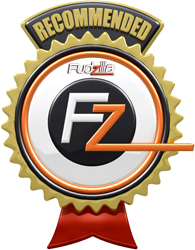A couple days ago we published a preview of Point of View/TGT GTX 680 Beast graphics card and now it’s time to follow it up with a full review. Point of View/TGT GTX 680 Beast’s GPU runs at high 1163MHz. In our preview, we said that the card is the fastest Kepler based card on the market, but our readers have informed us that KFA2 GTX 680 LTD v1 OC is faster and has a 1202MHz GPU. Note however that Point of View/TGT GTX 680 Beast is still one of the fastest cards around.
The GTX 680 LTD OC v1 is a limited edition card, which is naturally available in limited quantities due to the fast CPU speed (but the KFA2 GTX 680 LTD OC v2 with the GPU at 1150MHz is available in sufficient quantities). According to TGT, the number of chips that qualify for Beast cards is sufficient to cover the demand.
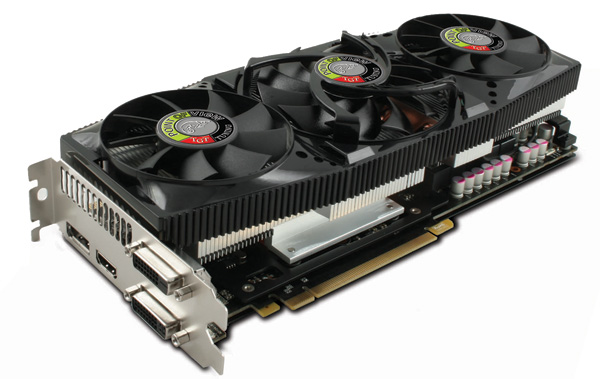
Quality and warranty are perhaps even more important than the actual overclock itself. Since we’re talking about Point of View/TGT here, we must say that we haven’t had any bad experiences with their cards.
TGT has a strict selection and only the best GPUs end up on Beast branded cards. This is how the company makes sure that Beast-branded cards not only run at high clocks, but have overclocking headroom as well. Additionally, this is what made the long warranty possible.
Beast GPU comes overclocked by 157MHz and such feats require adequate cooling. TGT opted for its tried and true triple fan cooler, which we’ve seen on GTX 680 UltraCharged cards.
The GTX 680 Beast and GTX 680 UltraCharged use the same cooling. We tested the GTX 680 UltraCharged earlier and we know the cooler packs a mean punch. The UltraCharged’s GPU is factory overclocked by 104MHz, whereas the Beast has a 157MHz overclock. Despite the high Beast’s overclock, the GPU’ temperature is only slightly higher than on the UltraCharged. In both cases, thermals are better than on the reference card.
The cooler’s exceptional performance is not a fluke, since it’s a triple slot cooler with three fans. We’ve already seen a few non –reference coolers for GTX 680 and they were wider than two slots, or taller than the reference design, so we weren’t surprised by PoV/TGT’s decision.
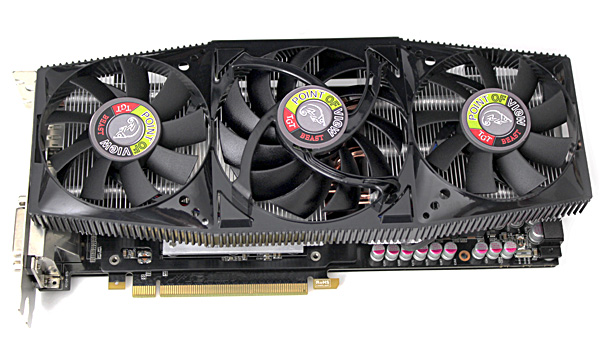
The central fan is a 9cm one while the other two are 8cm. Size isn’t the only difference as the propellers were designed differently.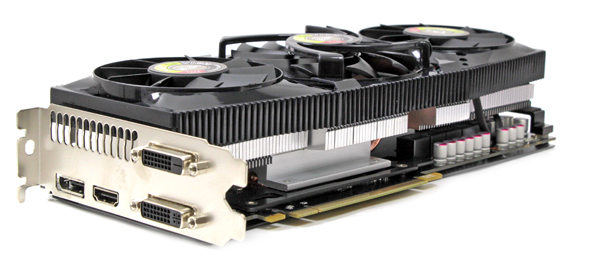
The fans are enclosed in a plastic mask, which is easily removable if you want to clean the fans. The heatsink is the widest in the middle, so the central fan is larger than the side ones.
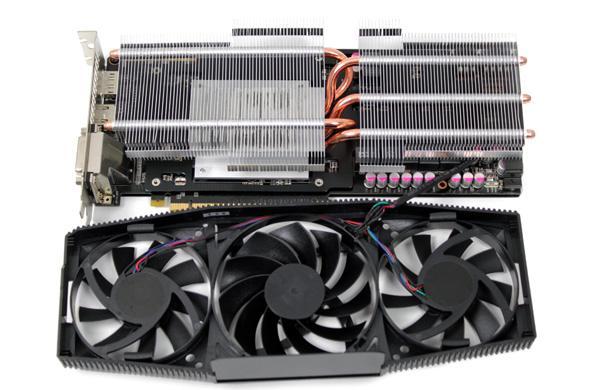
The heatsink has five heatpipes – tree goes towards the end and two towards the I/O panel.
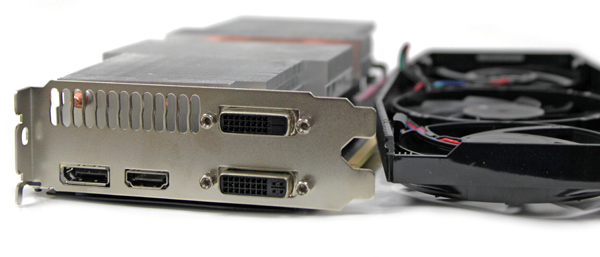
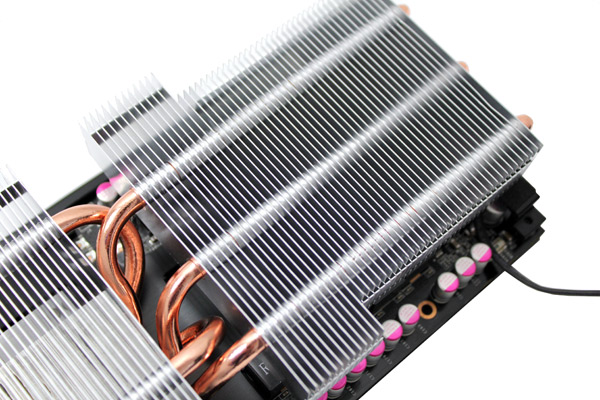
The cooler is fixed on the PCB with four screws, which go through the cooler base. The design is pretty tough and we didn’t hear/see any vibration due to the three fans.

On top of the cooler, see below, is a metal plate which would’ve been perfect for a logo, but it was left empty. It seems to us that the plate is there simply to cover the spot where heatsink splits.
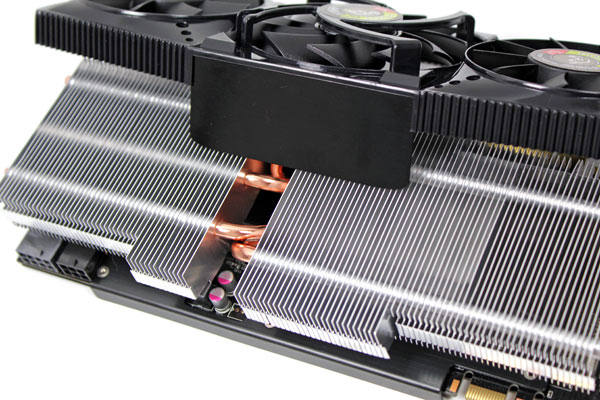
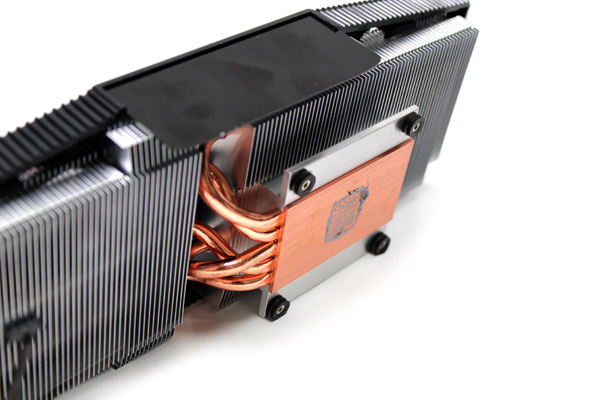
PoV/TGT strapped the card with a heatspreader for the memory and other low profile components on the PCB.
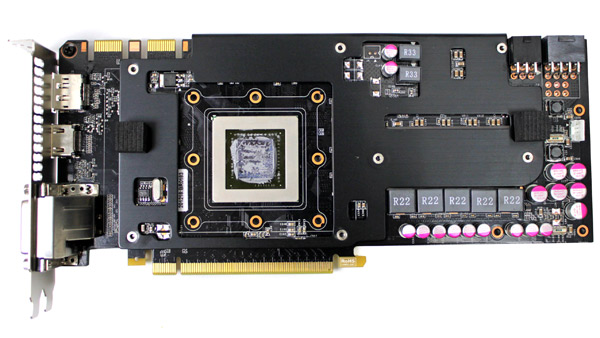
GTX 680 Beast comes with 2GB of GDDR5 memory. The chips come from Hynix (model No: H5GQ2H24MFR-R0C) and are rated at 1500MHz (6000MHz GDDR5 effectively).
Reference GTX 680 cards draw power via two 6-pin connectors. Factory overclocked GTX 680 Beast / UltraCharged has one 6-pin and one 8-pin power connector. Point of View / TGT uses five phase PWM design, one phase more than on the reference card.
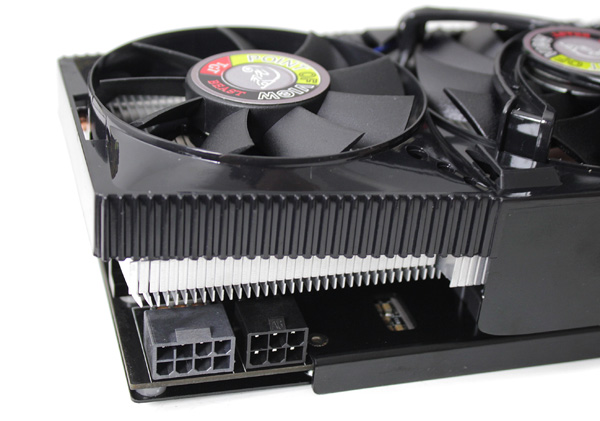
GTX 680 Beast comes with two dual-link DVI outs, but only one is analog VGA-out capable. The VGA-out requires using the bottom DVI – the one in line with HDMI and DisplayPort connectors. Nvidia made sure not to lag behind the competition so Kepler based cards can run up to four displays simultaneously.
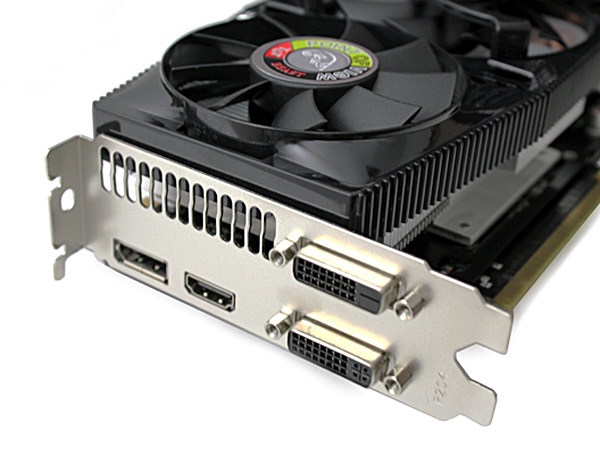
The card has two SLI connectors, which means Quad GPU is possible.
A metal plate was mounted on the back of the card. We must admit that it really does make it look better but it’s questionable whether it affects cooling performance.
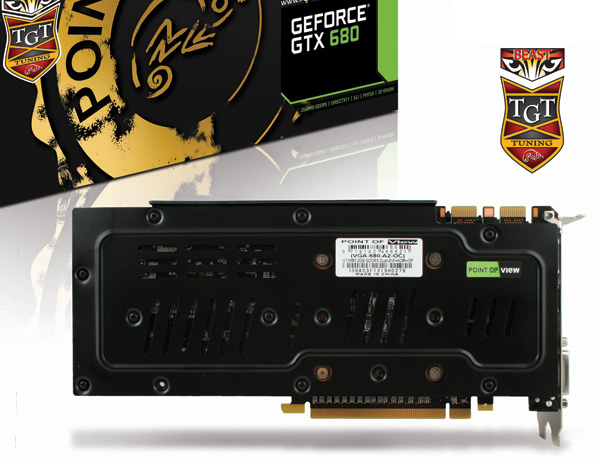
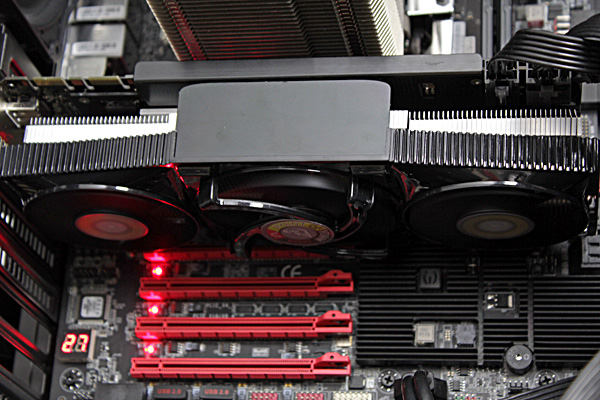
Testbed:
Motherboard: EVGA X79 FTW
CPU: Sandy Bridge-E Core i7 3820 (3.6GHz)
CPU Cooler: Thermalright HR-02 (Thermalright-Europa Distri www.PC-Cooling.de).
Memory: 8GB ADATA DDR3 1600 XPG Gaming series
Harddisk: OCZ Vertex 2 100 GB
Power Supply: CoolerMaster Silent Pro 1000W
Case: CoolerMaster Cosmos II Ultra Tower
Operating System: Win7 64-bit
Nvidia 301.42-desktop-win7-winvista-64bit-english-whql
12-4_vista_win7_64_dd_ccc.exe
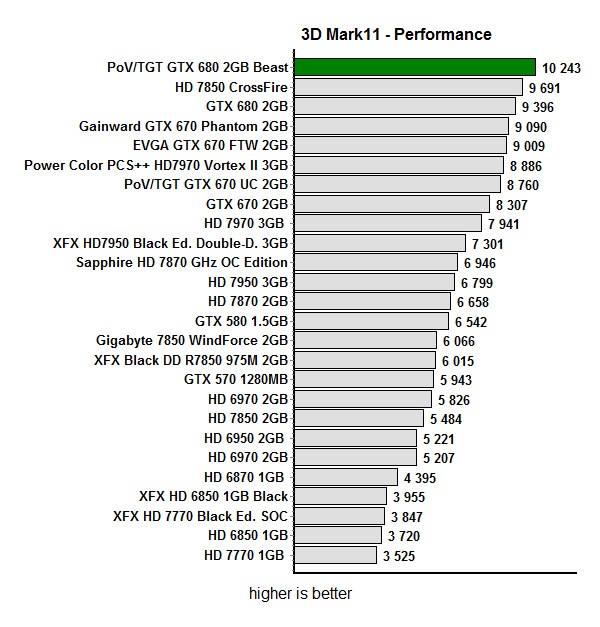
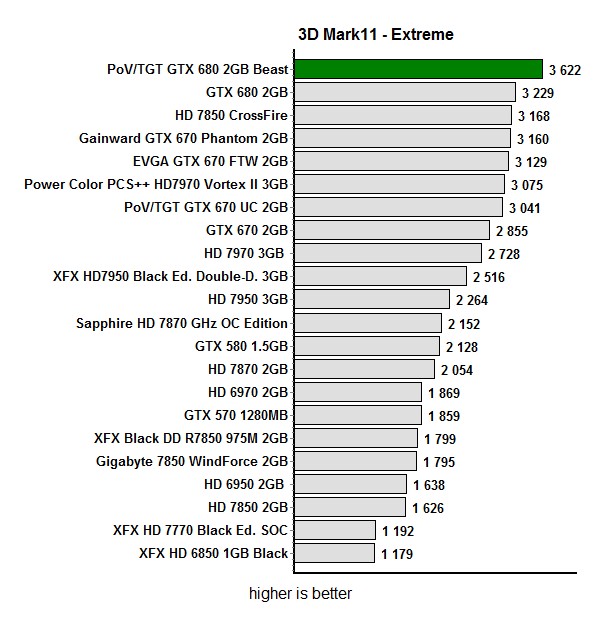
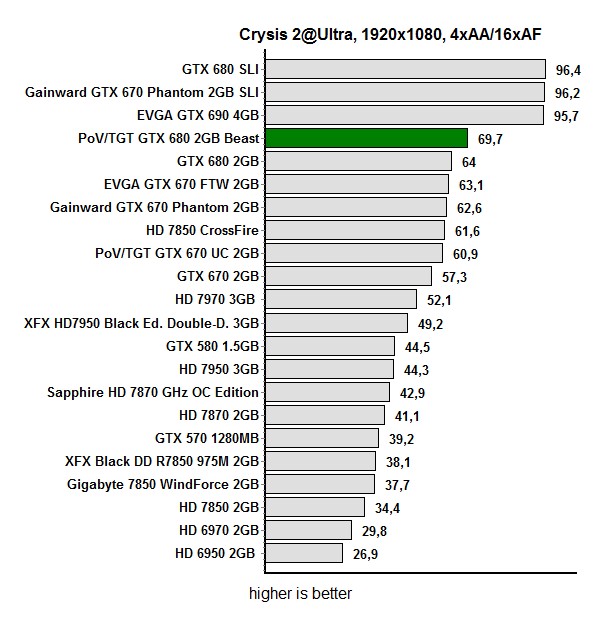
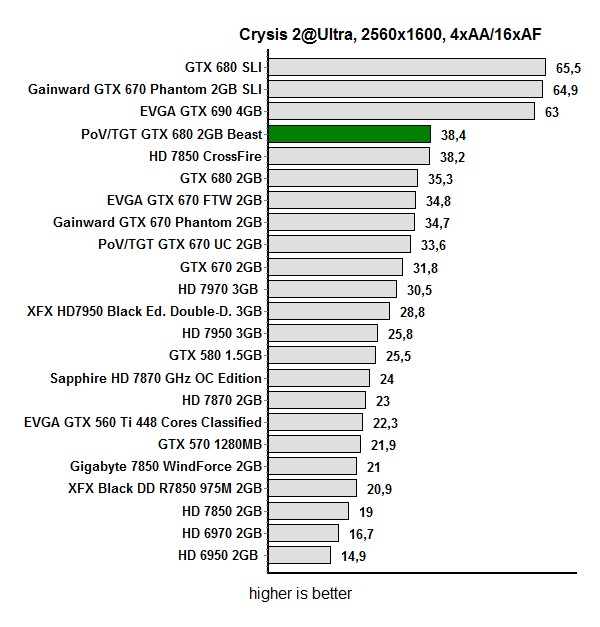
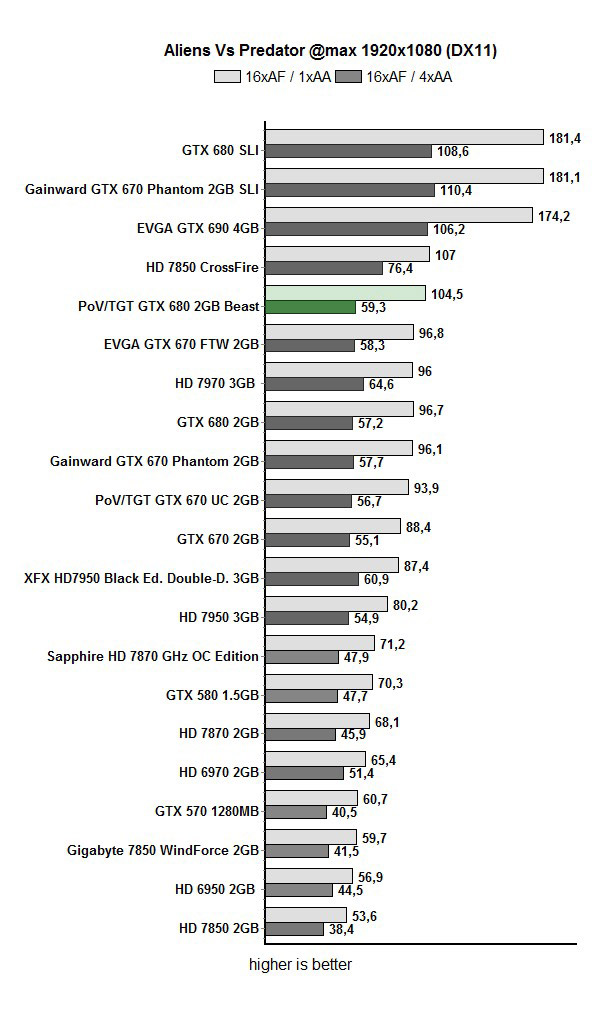
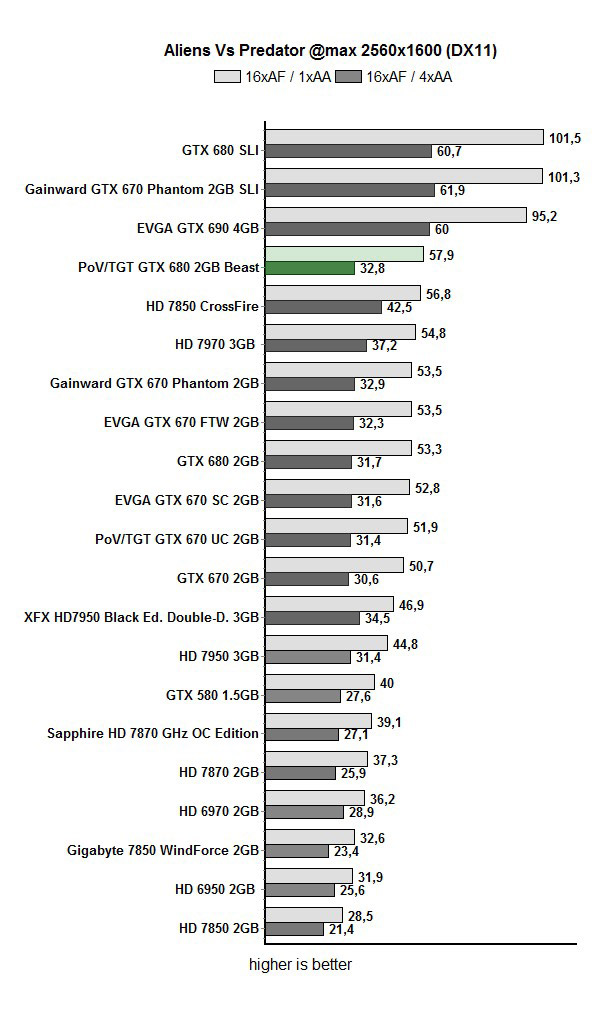
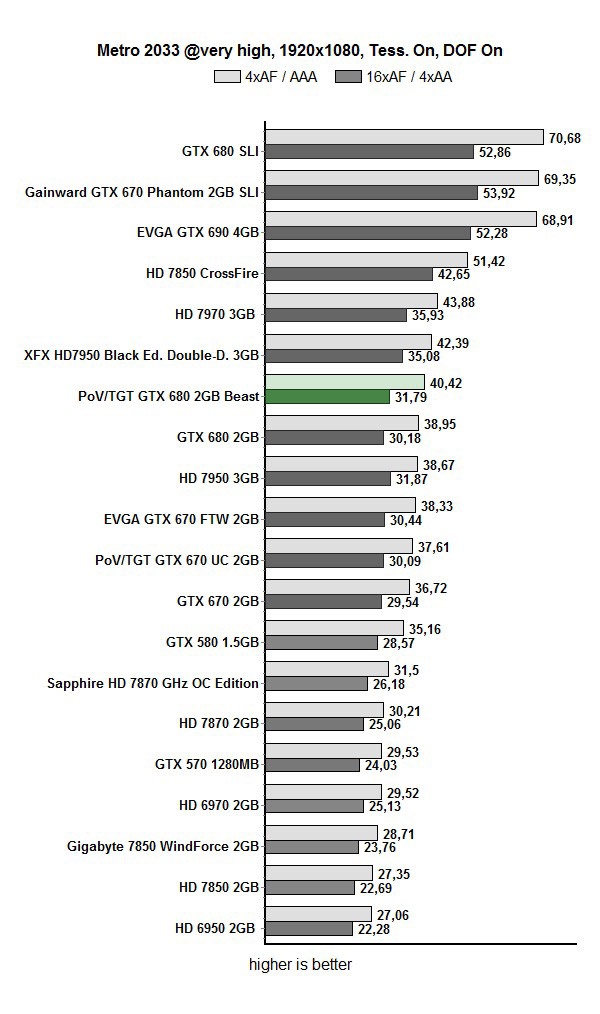
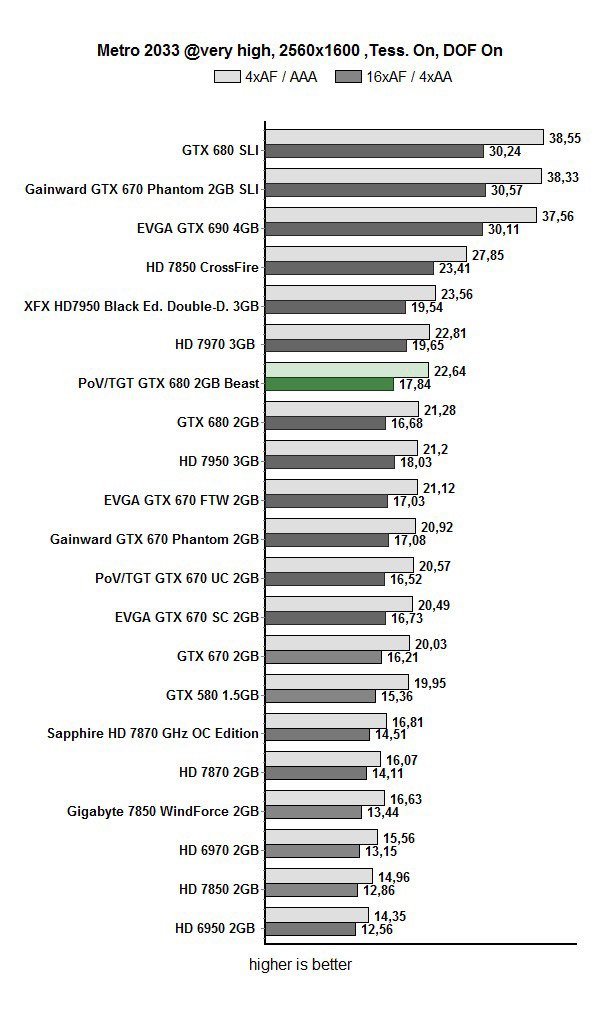

Despite the already hefty 157MHz overclock, we could overclock the GPU even further. Our maximum stable clock was 1223MHz (a 60MHz overclock). The Beast’s memory isn’t factory overclock and it’s really a pity because overclocking the memory helped us a lot with gaming results. The maximum clock we hit for the memory was at about 1650MHz (the reference clock is 1502MHz).
Overclocking the GPU alone from 1163MHz to 1223MHz produced the 70.7 fps result.
Overclocking the memory from 1502MHz to 1650MHz produced the 72.3 fps result.
Overclocking both the GPU and memory produced the 73.7 fps result.
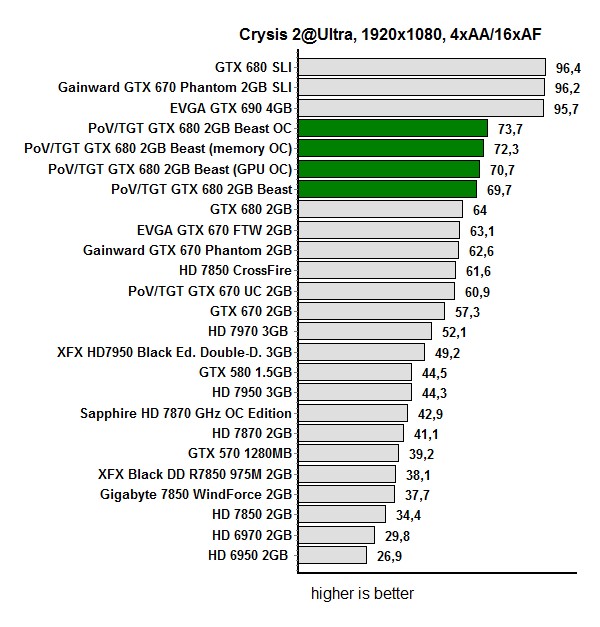
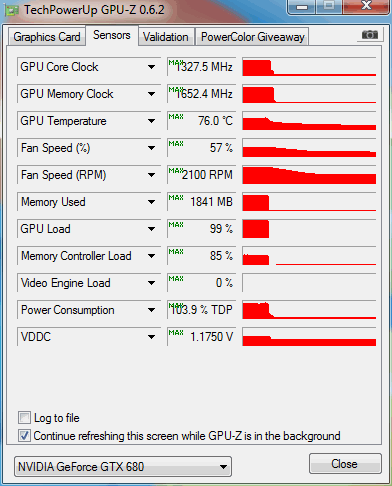
GTX 680 Beast’s cooler had no trouble cooling the overclocked GK104 GPU, which is clear from the fact that fan RPM didn’t exceed 53%, i.e. 1950RPM. The GPU hit 72°C during gaming, which is 6-7°C lower than on reference cards. Furthermore, the Beast’s cooler is not only silent when idle, but impressively quiet when working hard as well. In fact, we had to open the case in order to hear the fans during long gaming sessions.
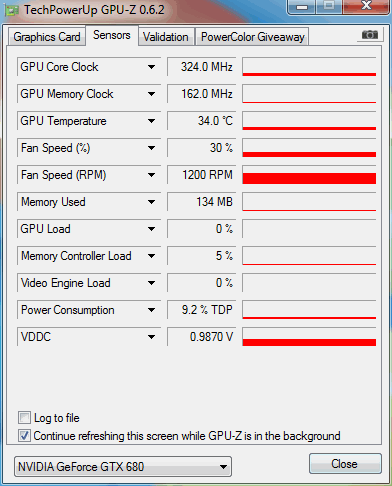
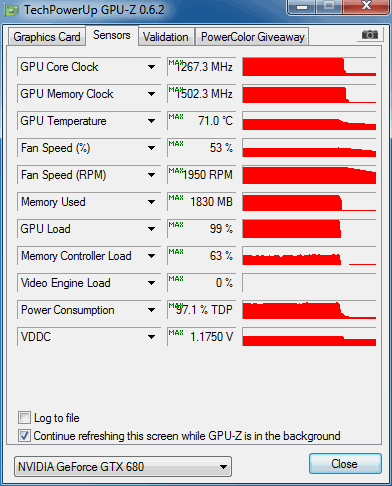
There are no signs or specs on the fans but we can confirm they do the job well. They only get loud beyond 65% RPM, but fan speed never exceeded 54% RPM, i.e. they were quiet.
The GTX 680 Beast card is powered via one 8-pin and one 6-pin power connectors (the reference PCB uses two 6-pin power connectors). Consumption is some 27W higher than on the reference GTX 680.

There are many good GTX 680 cards on the market and picking the best one is definitely not an easy task. Average users aren’t usually interested in overclocking or noise, so they wouldn’t regret buying a reference card either. The GTX 680 offers great performance for gaming at standard resolutions, 2560x1600 included.
Performance-consumption ratio on GTX 680 cards is already good, so overclocked cards can only build on it. Unfortunately, the price you’ll pay for factory overclocked GTX 680 cards tends to increase significantly the closer you get to the likes of GTX 680 Beast. Naturally, there are always enthusiasts who put performance and silence before price.
The GTX 680 Beast offers quality performance thanks to the 157MHz factory overclock, but the large three-fan cooler helped as well. Beast’s cooler is not only silent when idle, but impressively quiet when working hard as well. Despite the already high overclock, we managed to overclock the GPU by another 60MHz.
The resulting performance would’ve been even better if the memory was overclock, but the Beast, just like most other factory overclocked GTX 680s, comes with reference clocked memory. Overclocking the memory was not difficult though and we easily boosted it from 1500MHz to 1650MHz.
The cooler is a nice foundation for overclocking and GPU temperature didn’t exceed 76°C, not even while running at about 1300MHz. The only possible downside, if there is any, would be that the cooler takes up three slots, so bear this in mind if you’re planning on a SLI setup in the future.
The most affordable GTX 680 currently goes for about €465. The GTX 680 Beast should be somewhere in the range of the GTX 680 Beast Watercooled, i.e. around €550.
In conclusion, Point of View / TGT GTX 680 Beast is one lean and mean beast that would definitely be a worthy addition to anybody’s rig.
